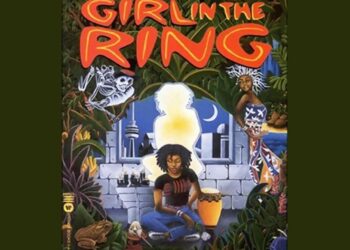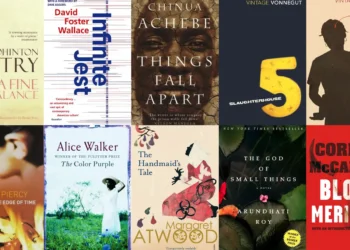BEST TOP 5 William Blake Poems in English Literature
William Blake, the visionary poet, painter, and printmaker of the Romantic era, left an indelible mark on English literature.. His literary pieces, distinguished by their ethereal quality, symbolic meaning, and examination of spirituality, persistently enthrall both readers and academics. We shall examine William Blake’s top 5 poems in this investigation, honoring his distinctive perspective and literary contributions.
1. “The Tyger”
William Blake’s “The Tyger” is a masterwork of literary analysis and maybe his most well-known poem. The poem, which examined the nature of creation, innocence, and experience, was published in 1794 as a part of his collection “Songs of Experience”. The poem “Tyger Tyger, burning bright, / In the forests of the night; / What immortal hand or eye, / Could frame thy fearful symmetry?” is a standout piece that evokes strong feelings in readers and prompts them to consider the reasons behind both kindness and cruelty in the world.
Blake’s use of vivid imagery and rhythmic language in “The Tyger” contributes to its lasting impact. The tiger becomes a symbol of the fierce, primal forces at play in the universe, prompting reflection on the dualities inherent in existence. The poem’s thematic richness and linguistic brilliance make it a cornerstone of Blake’s body of work.
2. “The Lamb”

“The Lamb” serves as a counterpart to “The Tyger” and is part of Blake’s “Songs of Innocence” collection. Published in 1789, this poem explores themes of innocence, divinity, and the relationship between the Creator and His creation. Through the simple yet profound question, “Little Lamb, who made thee? / Dost thou know who made thee?” Blake invites readers to contemplate the gentle, nurturing aspects of existence.
Blake demonstrates in “The Lamb” how he can include difficult philosophical issues into seemingly straightforward poetry. The purity and youthful awe of the poem provide a moving counterpoint to the complexity of “The Tyger.” Blake’s examination of the opposing facets of the human experience and his wide variety of themes are best shown by these companion poems taken together.
3. “The Songs of Innocence and of Experience” (Collection)
While not a single poem, “The Songs of Innocence and of Experience” is a collection that deserves recognition as a cohesive masterpiece. Published in 1789 and expanded in 1794, this collection features paired poems that explore the dualities of the human condition—from the purity of innocence to the complexities of experience. Through poetic pairings like “The Lamb” and “The Tyger,” Blake creates a nuanced narrative that delves into the multifaceted nature of life.
The thematic depth of “The Songs of Innocence and of Experience” has cemented its status as a literary gem. Blake’s exploration of societal, spiritual, and personal contrasts remains relevant, offering readers a profound reflection on the human journey. The collection serves as a testament to Blake’s visionary approach to poetry and his ability to convey profound truths through artful language.
4. “Auguries of Innocence”

“Auguries of Innocence” is a lesser-known but equally powerful poem that encapsulates Blake’s worldview. Written in 1803, this expansive work explores the interconnectedness of all existence and the consequences of human actions. The famous opening lines, “To see a World in a Grain of Sand / And a Heaven in a Wild Flower, / Hold Infinity in the palm of your hand / And Eternity in an hour,” encapsulate Blake’s belief in the cosmic significance of small moments.
Also Read-
- “The Chimney Sweeper” by William Blake Poem Summary
- Analyze the use of metaphor in William Blake’s The Tyger
- William Blake Biography and Works
In “Auguries of Innocence,” Blake presents a poetic tapestry that weaves together themes of innocence, experience, and the consequences of neglecting the interconnectedness of life. The poem is a testament to Blake’s mysticism and his ability to convey profound spiritual insights through evocative and imaginative language.
5. “The Chimney Sweeper”
“The Chimney Sweeper” is a poignant exploration of the social injustices of Blake’s time, particularly the exploitation of child labor. It exists in two versions—one in “Songs of Innocence” (1789) and another in “Songs of Experience” (1794). The poems tell the story of a young chimney sweep, highlighting the harsh realities faced by impoverished children in Blake’s society.
In the “Songs of Innocence” version, the sweepers find solace in a vision of a better afterlife, while the “Songs of Experience” version takes a darker turn, addressing the harshness of their current existence. Blake uses the plight of the chimney sweepers to critique the societal norms of his time, emphasizing the dehumanizing effects of industrialization and social inequality.
Conclusion
William Blake’s contribution to English literature is immortalized in his visionary poetry, which explores the complexities of human existence, spirituality, and societal injustices. The top 5 poems— “The Tyger,” “The Lamb,” “The Songs of Innocence and of Experience,” “Auguries of Innocence,” and “The Chimney Sweeper”— showcase Blake’s ability to blend profound philosophical questions with vivid imagery and imaginative language.
“The Tyger” and “The Lamb” serve as powerful counterparts, exploring the dualities of creation and innocence. “The Songs of Innocence and of Experience” stands as a collection that weaves together a tapestry of contrasting themes, offering a nuanced reflection on the human journey. “Auguries of Innocence” expands Blake’s vision to encompass the interconnectedness of all existence, while “The Chimney Sweeper” delves into the harsh realities of social injustice, particularly child labor.
Blake’s unique combination of mysticism, social commentary, and spiritual insight has left an indelible mark on literature. His poems continue to resonate with readers, inviting them into a world where the profound and the visionary converge in poetic harmony. As we reflect on Blake’s legacy, it becomes evident that his works transcend the boundaries of time and continue to inspire generations of readers and scholars.
FAQ.
1. Why is “The Tyger” considered William Blake’s most famous poem?
“The Tyger” is considered William Blake’s most famous poem due to its vivid imagery, rhythmic language, and profound exploration of creation, innocence, and experience. The central question about the fearful symmetry of the tiger resonates with readers and has become an iconic representation of Blake’s visionary poetry.
2. How does “The Songs of Innocence and of Experience” contribute to Blake’s body of work?
“The Songs of Innocence and of Experience” is a collection of paired poems that explores the dualities of the human condition. Through thematic contrasts like innocence versus experience, Blake creates a nuanced narrative that reflects on societal, spiritual, and personal complexities. The collection showcases Blake’s thematic range and poetic brilliance.
3. Why is “Auguries of Innocence” considered a powerful work by William Blake?
“Auguries of Innocence” is considered a powerful work by William Blake due to its expansive exploration of interconnectedness and the consequences of human actions. The opening lines, expressing the significance of small moments, capture Blake’s mystical worldview. The poem is a testament to Blake’s ability to convey profound spiritual insights through evocative language.
4. How does “The Chimney Sweeper” address social injustices?
“The Chimney Sweeper” addresses social injustices, particularly the exploitation of child labor, in two versions found in “Songs of Innocence” and “Songs of Experience.” Blake uses the plight of the chimney sweepers to critique the societal norms of his time, emphasizing the dehumanizing effects of industrialization and social inequality.
5. What themes are prevalent in William Blake’s poetry?
Themes prevalent in William Blake’s poetry include the exploration of creation, innocence, experience, spirituality, interconnectedness, social injustices, and the complexities of the human condition. Blake’s work often combines mysticism with social critique, creating a unique and visionary body of poetry.
















